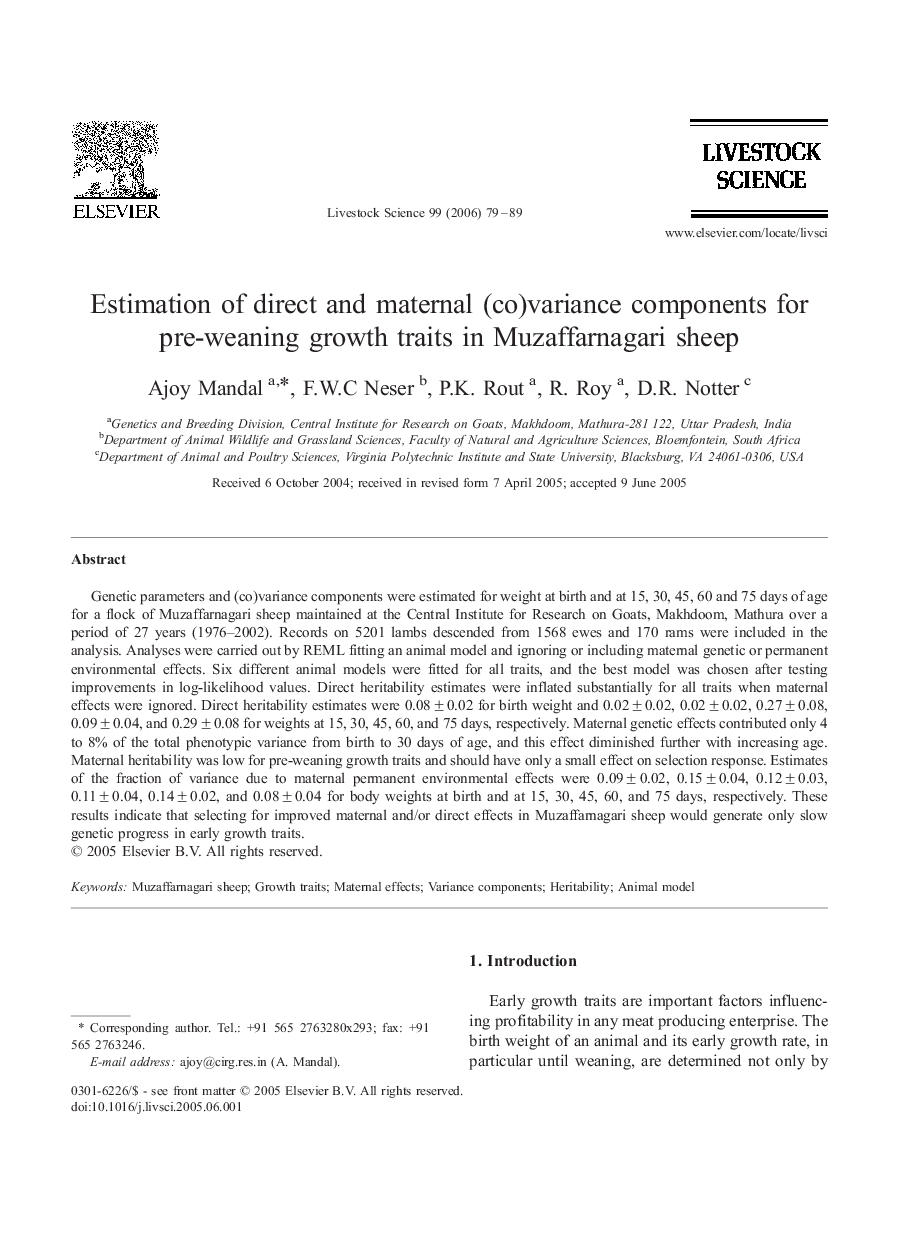| Article ID | Journal | Published Year | Pages | File Type |
|---|---|---|---|---|
| 2449280 | Livestock Science | 2006 | 11 Pages |
Genetic parameters and (co)variance components were estimated for weight at birth and at 15, 30, 45, 60 and 75 days of age for a flock of Muzaffarnagari sheep maintained at the Central Institute for Research on Goats, Makhdoom, Mathura over a period of 27 years (1976–2002). Records on 5201 lambs descended from 1568 ewes and 170 rams were included in the analysis. Analyses were carried out by REML fitting an animal model and ignoring or including maternal genetic or permanent environmental effects. Six different animal models were fitted for all traits, and the best model was chosen after testing improvements in log-likelihood values. Direct heritability estimates were inflated substantially for all traits when maternal effects were ignored. Direct heritability estimates were 0.08 ± 0.02 for birth weight and 0.02 ± 0.02, 0.02 ± 0.02, 0.27 ± 0.08, 0.09 ± 0.04, and 0.29 ± 0.08 for weights at 15, 30, 45, 60, and 75 days, respectively. Maternal genetic effects contributed only 4 to 8% of the total phenotypic variance from birth to 30 days of age, and this effect diminished further with increasing age. Maternal heritability was low for pre-weaning growth traits and should have only a small effect on selection response. Estimates of the fraction of variance due to maternal permanent environmental effects were 0.09 ± 0.02, 0.15 ± 0.04, 0.12 ± 0.03, 0.11 ± 0.04, 0.14 ± 0.02, and 0.08 ± 0.04 for body weights at birth and at 15, 30, 45, 60, and 75 days, respectively. These results indicate that selecting for improved maternal and/or direct effects in Muzaffarnagari sheep would generate only slow genetic progress in early growth traits.
